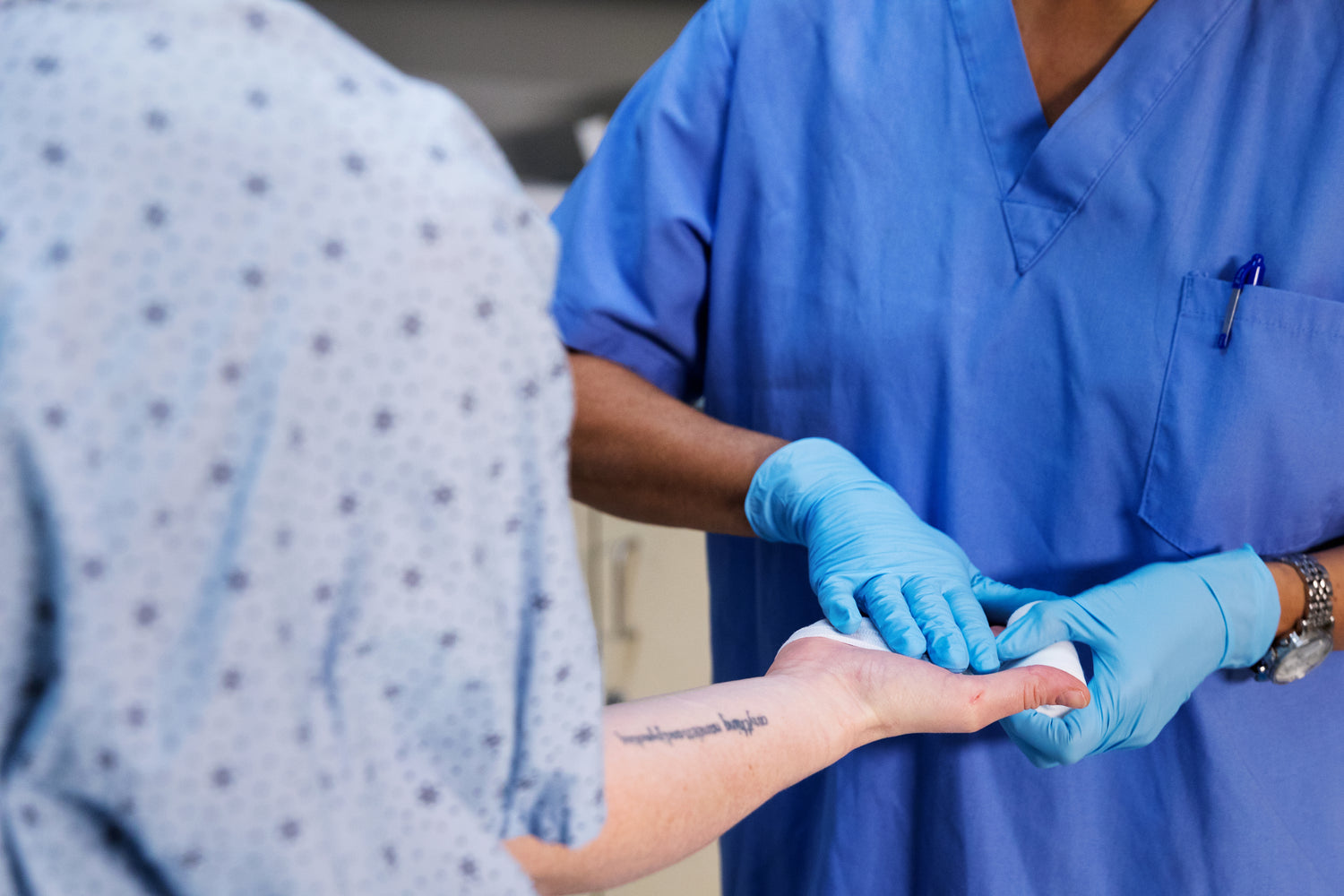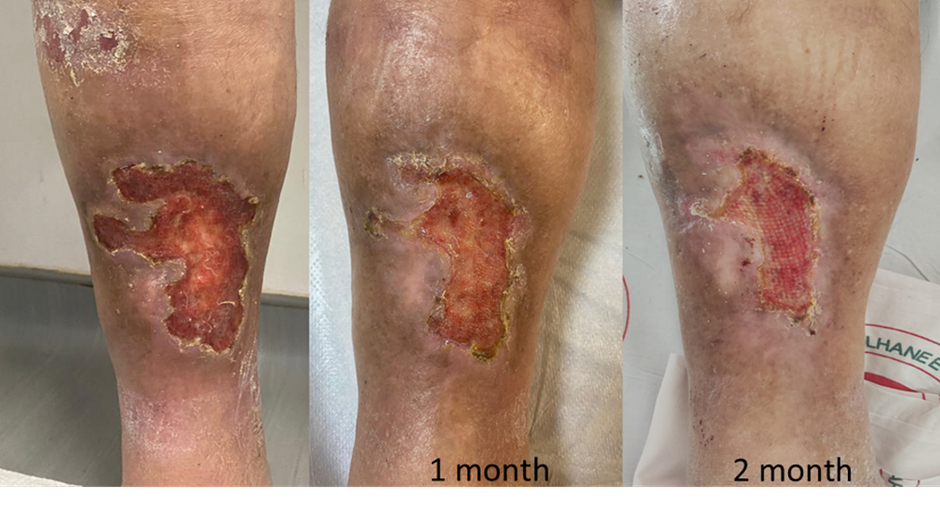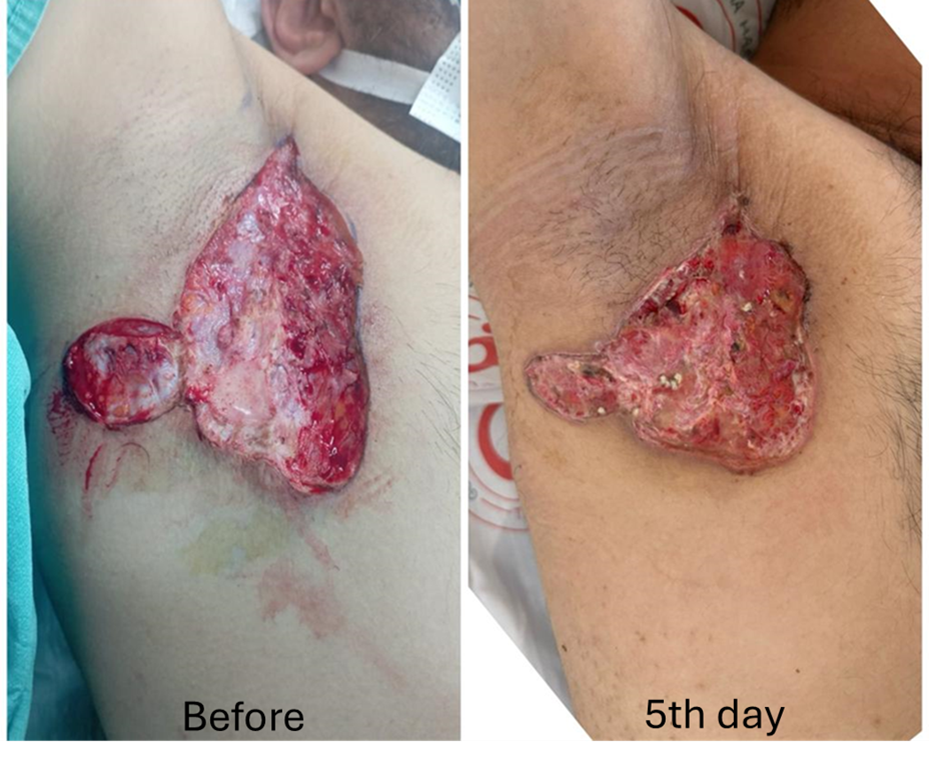
Regenerative Medicine in Wound Care
Regenerative medicine is rapidly emerging as a promising treatment for non-healing and burn wounds. Although much research is still in its infancy, current studies highlight significant improvements in patient outcomes. This suggests that regenerative medicine could become a cornerstone of wound care strategies in the future.
*WARNING* Graphic Images of wounds further down this page.
Regenerative medicine is rapidly emerging as a promising treatment for non-healing and burn wounds. Although much research is still in its infancy, current studies highlight significant improvements in patient outcomes. This suggests that regenerative medicine could become a cornerstone of wound care strategies in the future.
There are many reasons for why a wound will not heal by itself, but they tend to have similar characteristics;
1. Having elevated inflammatory markers
2. Low growth factor activity
3. High level of proteases
4. Reduced cellular proliferation
Due to these characteristics, regenerative medicine treatments are an ideal option, as they proliferate healing, reduce inflammation, introduce cell colonies and protect affected areas.
Platelet-Rich Fibrin
Numerous studies have demonstrated the efficacy of Platelet-Rich Fibrin (PRF) in treating non-healing ulcers, showing a substantial improvement in healing after application. Because of the lack of anticoagulant in a PRF application, a fibrin mesh is formed which is rich in platelets and growth factors. This forms a healing scaffold that isolates the wound from the external environment, and also creates an area rich in growth factors which begin and accelerate natural healing.
Additionally, PRF is recognised as an easy, safe, and cost-effective alternative compared to other treatment options. (Dorjay et al, 2021)
Building on this, research has also investigated the possibility of integrating PRF into burn healing treatments.In a 2021 study by Schulz et al., the potential of PRF to enhance healing in deep thermal burns was explored. The trial, which involved 10 patients, found that a PRF application significantly improved wound healing after enzymatic debridement and reduced the risk of infection. Although the study was limited by its small sample size and external variables, it underscores the promising role of regenerative medicine in burn healing.
Exosomes in Regenerative Medicine and Wound Care
In addition to PRF, exosomes are receiving increased attention in regenerative medicine and wound care research. A systematic review by Prasai et al. analysed 51 studies on exosomes used to accelerate wound healing in rodent models. Nearly all studies reported beneficial therapeutic outcomes with exosome administration, suggesting that exosomes could soon play a significant role in clinical wound care by enhancing healing processes.
Moreover, research on platelet-derived exosomes has shown that an autologous platelet exosome product, like Exomine, is extremely promising. Platelet-derived exosomes are found to stimulate cellular differentiation, support musculoskeletal and neural regeneration, and promote effective wound healing. This highlights their potential to be a valuable component in the wound care process. (Mostafa et al.)
Dermomine: Autologous Micrografting Technology
A common reason for the persistence of a chronic wound is that it cannot maintain a normal tissue architecture, either because of insufficient nutrients and oxygen, or the metabolic demands of the wound are too high for the body. Fibroblasts are critical for building and maintaining tissue architecture, something a non-healing wound is lacking or requiring in excessive quantities.
By harvesting fibroblasts through advanced micrograft techniques, Dermomine can treat damaged skin by introducing colonies of fibroblasts to an affected area, including for non-healing wounds. This approach, known as Autologous Micrografting Technology (AMT), involves a non-surgical procedure where a small biopsy is taken from behind the ear. This biopsy is then combined with Platelet-Rich Plasma (PRP) or simply saline, and injected into the target area.
AMT has demonstrated significant efficacy in healing complex, non-healing wounds and burns. According to research by Balli et al., autologous micrograft systems enhance wound healing by promoting the migration of fibroblasts and keratinocytes, and increasing matrix metalloproteinases activity. This evidence supports Dermomine’s potential in advancing wound care through innovative regenerative techniques.
The images below illustrate the improvements in non-healing wounds following Dermomine treatment. These visual results highlight the effectiveness of advanced micrograft techniques in promoting recovery and skin regeneration.

Dermomine on a non-healing diabetic wound.

Another non-healing diabetic wound before and after Dermomine application.
Lipomine & SVF Microlysers: Adipose Fat & Stem Cells for Non-Healing Wounds
To understand why stem cell-rich fat grafts are effective for non-healing wounds, it's important to know what causes these injuries. Chronic wounds occur when the body can't support the energy needed for healing. Healing requires nutrients and oxygen, delivered through a process called vascularisation.
Vascularisation is the formation of small blood vessels that bring glucose and oxygen to cells, promoting tissue repair. Without it, cells die (apoptosis), leading to tissue death (necrosis). As necrosis sets in, it's even harder for blood vessels to form, making the wound worse and harder to heal.
One way that Lipomine (and SVF) effectively reverse the damage of a non-healing wound is by hypercharging the vascularisation pathway. The processed adipose tissue is rich in mesenchymal stem cells, supporting the creation of new blood vessels. The application of the tissue to the wound therefore creates a more optimal environment for this process, allowing much needed nutrients and oxygen access to the area and healing to start.
Cell Numbers
Another factor in the formation of non-healing wounds is when the number of dead cells vs. living cells hit a critical mass. The dead cells begin cancelling out the positive function of the living cells, meaning healing cannot take place.
Both SVF and Lipomine are effective in stopping this process. The processed tissues are injected into the affected area, which flood the wound with progenitor cells that begin forming new living tissue. These compatible living tissues enable:
- The breaking down of dead tissue
- Vasularisation
- The spontaneous proliferation of new cells that continue to support wound healing.
The SVF Microlyzer Kit is highly effecting in reversing the effects of cell necrosis because mesenchymal stem cells are the most efficient in transitioning into useful living tissue. Because of this rapid change, the scales shift in the favour of the living cells, which starts a positive chain of events that trigger healing.
References
Dorjay K, Sinha S. Platelet-rich Fibrin in Nonhealing Leg Ulcers: A Simple and Effective Therapeutic Option. J Cutan Aesthet Surg. 2021 Apr-Jun;14(2):160-165. doi: 10.4103/JCAS.JCAS_130_19. PMID: 34566357; PMCID: PMC8423206.
Nagaraju U, Sundar PK, Agarwal P, Raju BP, Kumar M. Autologous Platelet-rich Fibrin Matrix in Non-healing Trophic Ulcers in Patients with Hansen's Disease. J Cutan Aesthet Surg. 2017 Jan-Mar;10(1):3-7. doi: 10.4103/JCAS.JCAS_17_16. PMID: 28529413; PMCID: PMC5418979.
Schulz A, Schiefer JL, Fuchs PC, Kanho CH, Nourah N, Heitzmann W. Does Platelet-Rich Fibrin Enhance Healing Of Burn Wounds? Our First Experiences And Main Pitfalls. Ann Burns Fire Disasters. 2021 Mar 31;34(1):42-52. PMID: 34054386; PMCID: PMC8126367.
Prasai A, Jay JW, Jupiter D, Wolf SE, El Ayadi A. Role of Exosomes in Dermal Wound Healing: A Systematic Review. J Invest Dermatol. 2022 Mar;142(3 Pt A):662-678.e8. doi: 10.1016/j.jid.2021.07.167. Epub 2021 Aug 27. PMID: 34461128; PMCID: PMC9400548.
Antich-Rosselló, Miquel, et al. "Platelet-derived extracellular vesicles for regenerative medicine." International journal of molecular sciences 22.16 (2021): 8580.
Saumell-Esnaola, Miquel, et al. "Isolation of platelet-derived exosomes from human platelet-rich plasma: biochemical and morphological characterization." International Journal of Molecular Sciences 23.5 (2022): 2861.
Yang, Jiayi, et al. "Umbilical cord-derived mesenchymal stem cell-derived exosomes combined pluronic F127 hydrogel promote chronic diabetic wound healing and complete skin regeneration." International journal of nanomedicine (2020): 5911-5926.
Zhang, Mi, et al. "Advanced application of stimuli-responsive drug delivery system for inflammatory arthritis treatment." Materials Today Bio 14 (2022): 100223.
Mostafa Saberian, Niloofar Abak,
Hydrogel-mediated delivery of platelet-derived exosomes: Innovations in tissue engineering, Heliyon, Volume 10, Issue 2, 2024, e24584 ISSN 2405-8440, https://doi.org/10.1016/j.heliyon.2024.e24584
Balli, M., Vitali, F., Janiszewski, A. et al. Autologous micrograft accelerates endogenous wound healing response through ERK-induced cell migration. Cell Death Differ 27, 1520–1538 (2020). https://doi.org/10.1038/s41418-019-0433-3
